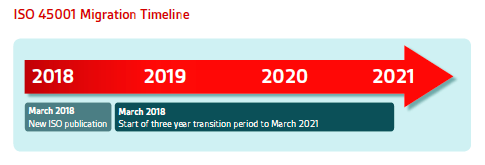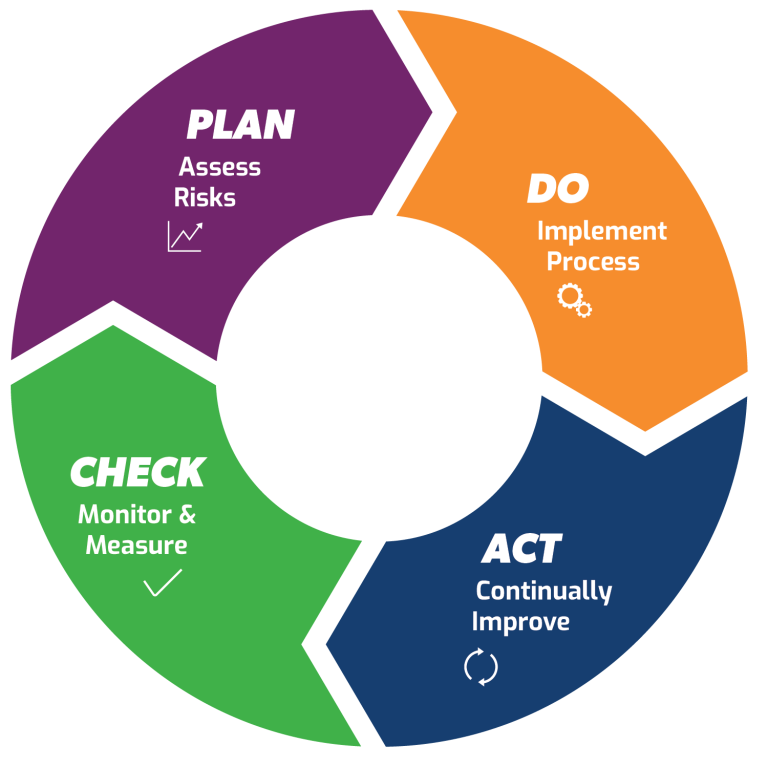In March 2018, ISO finalized its occupational health and safety (OH&S) management system standard ISO 45001-2018. For those companies certified under the former occupational health and safety management system standard OHSAS 18001, the clock is ticking if you are considering migrating to the new ISO standard and maintaining your current certification. Companies that have implemented OHSAS 18001 and are interested in maintaining certification have until March 2021 or about a year to implement the new standard or lose certification.
Sources indicate that as many as 10,000 to 20,000 companies worldwide are OHSAS 18001 certified and will need to migrate to ISO 45001 before the March 2021 deadline.
Safety management systems require a system approach to safety similar to the approach used for other management systems such as quality, environmental, and energy management systems. The systems approach ensures that companies develop and maintain a sustainable safety program that helps to assure regulatory compliance while driving continual improvement in safety performance.
The ISO 45001 Standard:
- Includes numerous changes from the OHSAS 18001 standard including:
- Greater Responsibilities for Leadership
- Increased Employee Participation
- Coordination of Multi-Employer Workplaces
- More Detail Regarding Management of Change (MOC)
- Control of Procurement and Outsourcing
- The ISO 45001 Framework Aligns with Other Standards
- ISO 9001 – Quality
- ISO 14001 – Environmental
- ISO 50001 Energy
- Based on the familiar Plan-Do-Check-Act Model
Because of the ISO 45001 harmonization with quality, environmental, and energy management systems, combining these four management systems into one integrated management system is that much easier. By combining management systems into one overarching system, the overall direction of the company management system is more clearly defined, implementation is facilitated, and duplication and wasted effort eliminated.
Lower Injury Rates
Companies that have implemented safety management systems, whether the system is certified or not, often take advantage of lower injury rates and improved OSHA compliance – both competitive advantages in a competitive world. Other benefits include:
- Drives culture improvement
- Provides a framework for continual improvement of OH&S performance
- Provides for a sustainable systematized approach to health and safety management
- Focuses on outcomes
- Improves ability to respond to regulatory compliance issues
- Focuses on the systematized identification and control of risks
TRC has broad experience in helping companies advance their safety programs by effectively implementing a safety management system – at the plant level or enterprise-wide. We can assist with the entire process from developing a strategic plan with leadership, performing the gap assessment to identify strengths and weaknesses, developing required processes and procedures, performing employee training, and conducting a readiness assessment in preparation for the certification audit.
For more information, please contact John Angelo at jangelo@trccompanies.com or James Wink at jwink@trccompaines.com or visit https://www.trccompanies.com/services to find out more about the services TRC can offer.






